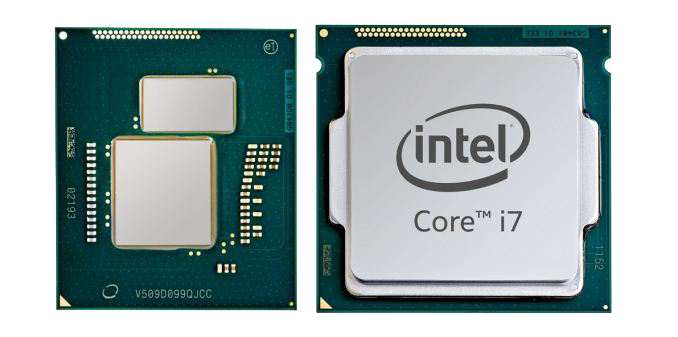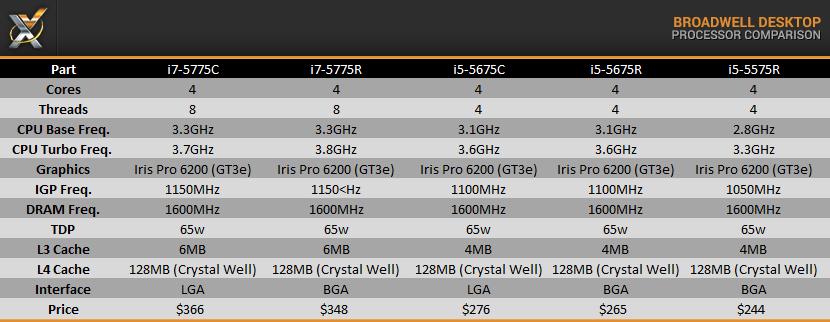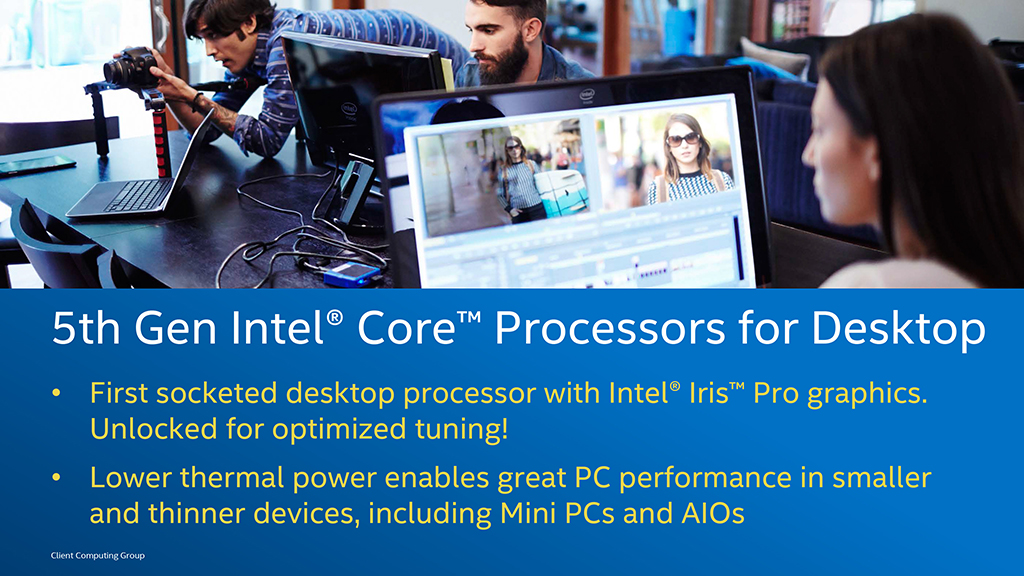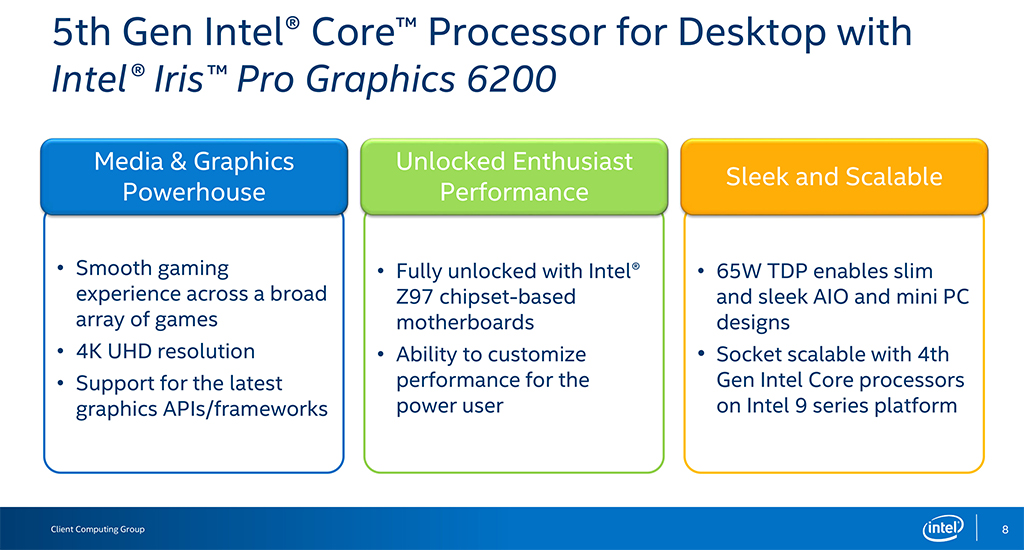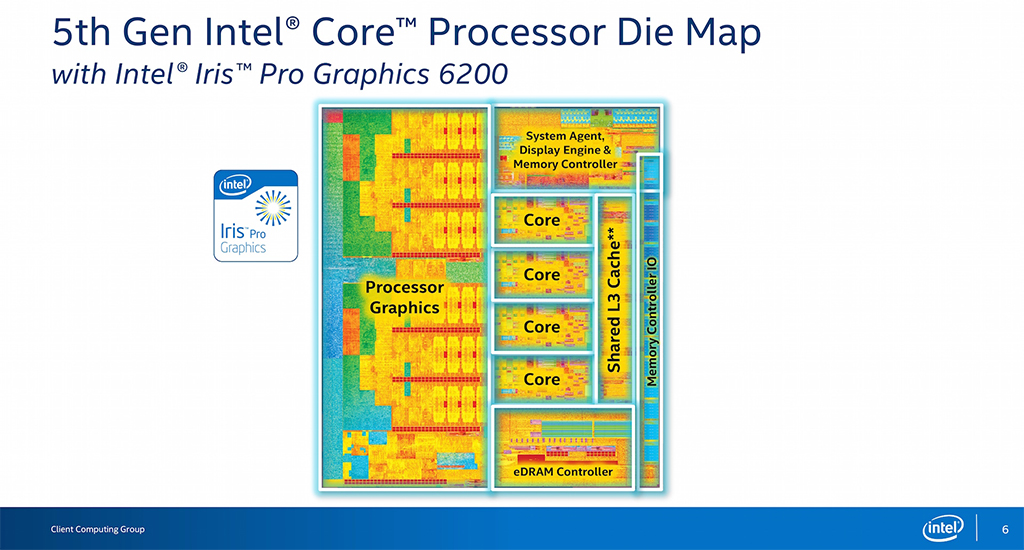While the first products featuring Intel’s Broadwell micro-architecture were released last fall, problems with yields for their latest 14nm manufacturing process lead to long delays in the release of some products, which forced Intel to delay the full Broadwell rollout.
Today, marks the latest, and presumably final phase in their Broadwell cycle, with the release of five new higher-performance quad-core processors, which are aimed at the enthusiast, and desktop workstation markets.
BROADWELL-DT
For the desktop, Intel has released a total of five new parts, each belonging to the Core i7 or Core i5 processor families, two of which are socketed, while the others will be soldered down BGA parts, similar to that of most mobile parts.
Those parts with the ‘R’ moniker will be soldered, while the ‘C’ parts will be socketed, unclocked LGA 1150 parts, which should be compatible with current Z97 and Z87 motherboards, with a BIOs update.
Pricing on these new chips is slightly higher than some of the current lineup, with the i7-5770C launching at $366 compared to $350 for the previous generation i7-4790K, and the i5-5675C at $276 is quite a bit more than the $243 for the i5-4690K. This change in pricing is likely due to the inclusion of the much more expensive 128MB L4 Cache, which is provided by the Crystal Well eDRAM module.
While we haven’t had the opportunity to test these new chips yet, early reports show fairly significant IPC gains over previous the previous generation Haswell architecture, with power consumption being in line with the 65w TDP rating, which is also much less than current desktop Intel processors, making these new chips ideal for small form-factor and all-in-one PCs.
Aside from lower TDP, it seems the most significant change between these new chips and their previous-generation Haswell counterparts, is the inclusion of Intel’s Iris Pro (GT3e) graphics, which when combined with the high-bandwidth 128MB Crystal Well eDRAM, and larger number of execution units (48) should provide quite a bit of graphics performance.
That being said, with the higher price, and relatively small processor performance gains, Broadwell looks to be a hard sell for most desktop users, except for those that are absolutely limited to integrated graphics, and still need relatively high-end processing power, which is actually a fairly small market, in the grand scheme of things.
 Technology X Tomorrow's Technology Today!
Technology X Tomorrow's Technology Today!

